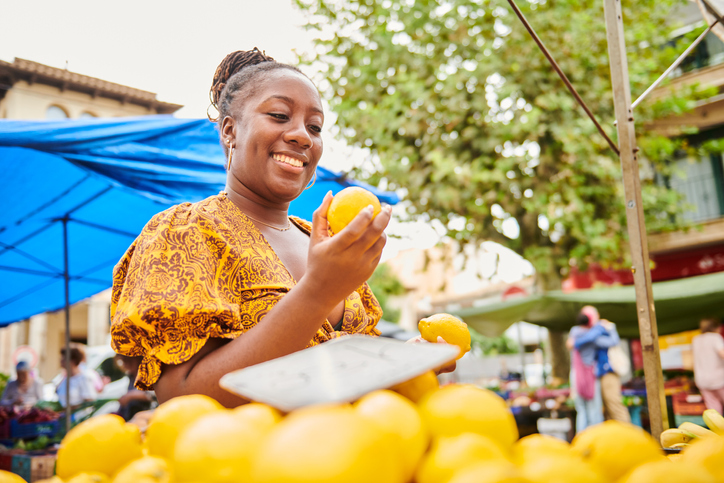
Source: PeopleImages / Getty
As a society, our relationship with food is changing – partially by choice and partially out of necessity. Food prices were up nearly 11 percent in the fall of 2022 compared to the fall of 2021, says the USDA. This historic inflation is driving many consumers to think differently about how they feed the mouths in their home. Black Hills Fox news reports that it’s resulted in more people than ever shopping at their local farmer’s market because, for once, the prices there are better than those found at the major grocery chains.
Finances have inspired some shoppers to take an interest in supporting local food producers. Still, many Americans have been showing an interest in being more conscious about where they get their ingredients. From environmental reasons to social justice ones, people are starting to recognize that what’s on your plate is more than just a yummy recipe – it’s a representation of your values.
As MADAMENOIRE continues our weekly series on putting your money where your values are, we focus on food this week. Families across the country are shopping and preparing for big holiday meals, so it’s a great time to pay extra attention to where you source your ingredients. Here are ethical shopping tips for your holiday ingredients.
Support Local Farmers

Source: Flashpop / Getty
You can do this by going to your farmer’s market, or even going to the farms themselves, as many have pop-up markets on location, or allow shoppers to pick their own produce and pay by the pound. When you buy your produce from major supermarkets, much of it has traveled hundreds of miles to get to the store. That’s because major grocery stores try to keep nearly every variety of produce in stock, all year long, including things that aren’t seasonal for the area. So that heirloom tomato you grab in the dead of winter probably took a CO2-producing plane ride to get to you.
The seasonal issue brings up another point – adjust your menu to only use seasonal produce. There are tons of delicious, flavorful produce in season, every season. Learning to skip certain ingredients when they aren’t in season can help you create dishes around what’s in season now, making it easier to get your produce from local farmers.

